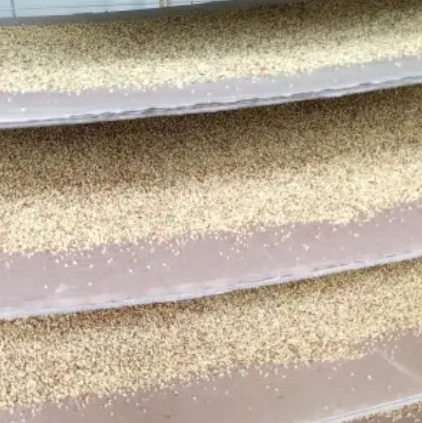Dec . 11, 2024 10:36 Back to list
Assessing Apricot Pollen Production and Its Impact on Fruit Yield and Quality
Understanding Apricot Pollen Yields A Key to Improving Fruit Production
Apricots, with their sweet, succulent flavor and vibrant orange hue, are a favored fruit in numerous regions around the world. However, the successful cultivation of apricots hinges significantly on effective pollination, a process that can often be influenced by various environmental factors. The study of apricot pollen yields is thus a critical aspect of agronomy and horticulture, providing invaluable insights into how we can enhance fruit production and ensure the sustainability of apricot orchards.
Pollination is an essential step in the reproductive cycle of flowering plants, and the efficiency of this process can determine the yield and quality of the fruit. In apricots, pollen is key to fertilizing the ovules, leading to fruit development. However, the yields of apricot pollen can vary depending on several factors including weather conditions, the health of the trees, and the availability of pollinating insects. Thus, a thorough understanding of pollen yields can aid farmers and orchard managers in making informed decisions about their cultivation practices.
Factors Affecting Apricot Pollen Yields
1. Environmental Conditions Weather plays a significant role in the production of pollen. Adequate temperatures during the flowering season are crucial for pollen viability. Cold temperatures can lead to poor pollen production, while extreme heat can negatively impact the viability of the pollen. Rainfall during the flowering period can wash away the pollen or hinder pollinators, further complicating the pollination process.
2. Tree Health and Variety Not all apricot varieties produce the same amount of pollen. Some cultivars are known for their high pollen viability, while others may be less prolific. Additionally, the overall health of the tree, including its nutritional status and resistance to pests and diseases, can greatly influence pollen production. Maintaining healthy trees through proper care, such as regular pruning and fertilization, can significantly improve pollen yields.
3. Pollinator Activity The presence of effective pollinators, like bees, is essential for the successful transfer of pollen. A decline in bee populations due to pesticides or habitat loss can lead to lower pollination rates, making it crucial for orchard managers to foster environments conducive to bee activity. Planting flora that supports pollinator health and using integrated pest management practices can help maintain a diverse pollinator population.
Measuring and Maximizing Pollen Yields
apricot pollen yields service

Researchers and agronomists often employ various methods to measure pollen production and viability. Techniques such as microscopic examination and biochemical analysis frequently yield data that can be leveraged to better understand the conditions that maximize pollen yields. Field studies can also provide practical insights into how different practices influence overall pollen production.
To maximize apricot pollen yields, growers are encouraged to adopt specific strategies
1. Selection of Pollinator Varieties Planting a mix of apricot varieties can enhance cross-pollination, resulting in higher fruit set. By selecting complementary varieties known for their pollen output, orchard managers can significantly boost productive capacity.
2. Soil and Nutrient Management Regular soil testing and amendments based on the findings can lead to improved nutritional status for apricot trees. Adequate levels of potassium, phosphorus, and nitrogen are critical for optimal tree health and pollen production.
3. Enhancing Pollinator Habitat Creating pollinator-friendly habitats by planting wildflowers and minimizing pesticide use can attract a broader range of pollinators to the orchards. This approach not only supports biodiversity but also improves the overall efficacy of pollination.
Conclusion
In conclusion, understanding apricot pollen yields is crucial for enhancing the production and quality of apricot fruits. By recognizing the environmental, biological, and managerial factors that influence pollen yields, growers can take steps to ensure higher yields and better fruit quality. As the demand for fresh apricots continues to rise globally, improving our knowledge and management practices surrounding pollen yields will be essential for the sustainability of apricot production in the years to come.
-
AI-Powered Plant Pollen Analysis Using GPT-4 Turbo
NewsAug.03,2025
-
Plant Pollen Analysis: Fast & Accurate with GPT-4 Turbo
NewsAug.02,2025
-
KiwiPollen with GPT-4 Turbo: AI Health Supplement Boost
NewsAug.01,2025
-
Pollen Peach Tree AI Management with GPT-4-Turbo
NewsJul.31,2025
-
Eco Fruit Paper Bags for Peak Freshness | Durability Focused
NewsJul.31,2025
-
Pollen Peach Tree for Pure Pollination and High-Quality Peach Pollen
NewsJul.30,2025